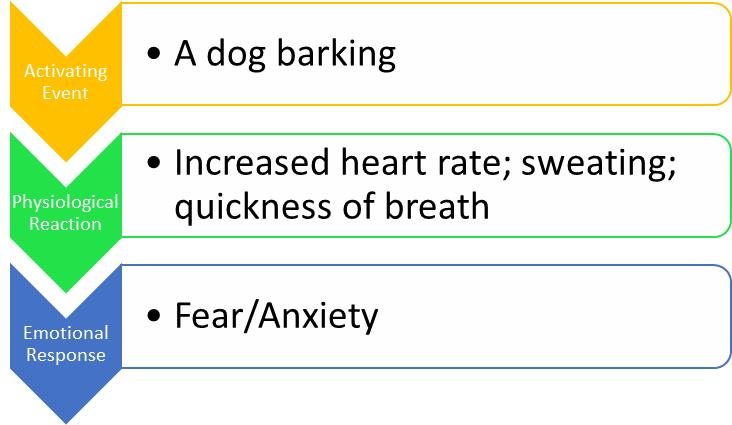Sociology Notes – James Lange Theory – For W.B.C.S. Examination.
Started independently by two psychologists in two parts of the world. William James found this theory in America. Carl Lange was doing the same things. What do you mean by a common sense view of emotions? This theory of James & Lange states just opposite facts to this question.Continue Reading Sociology Notes – James Lange Theory – For W.B.C.S. Examination.
The common sense says you have perception of emotion provoking stimulus. After perception you have ideation this leads to emotion. You experience emotion. After the experience comes the bodily changes (organic changes) Tiger – Experience (fear) – Running (changes) James – Lange say just the opposite 1st perception then followed by bodily changes and because of the bodily changes you feel fear. These bodily changes are produced in a reflexive way.
Whatever happens to our body outside or inside our brain knows it. Say you have a burning sensation then the sensory neurons report it to the brain. The reporting of these bodily changes is emotion. So perception of the bodily changes is emotion. In William Jame’s own words – ‘My theory is that the bodily changes follow directly the perception of the exciting fact and that our feeling of the same changes as they occur is the emotion”. If perception according to James Lange theory was not followed by bodily sensation (changes) then the perception would remain cold and colorless. In other words – An emotion is a mass of organic sensations due to organic changes in the internal organs following upon the perception of an exciting object. The emotional warmth comes from the organic sensations. This theory sates two things as we implement –
1. The cerebral cortex
2. The bodily changes William James gives the following points in favour of his theory.
- Say you were walking alone in dark wood & suddenly you hear a noise than for a fraction of a second you stop or your heart stops and this is a bodily change and reflexive too and then you realize the fear and do the needful.
- If you imagine that you have a feeling of emotion. When you feel anger and you feel the bodily changes and if you deliberately than the emotion stops.
- When actors come on stage they have to do different kinds of roles like angry, sad etc. They now have to show the bodily changes he says those then they actually feel it.
- Bodily changes can be produced artificially and when this is done they exhibit emotions.
Criticising against this theory weighs much more than its praises.
- The emotion according to this is identified with bodily changes. It says there is no emotion without bodily changes (a corresponding bodily change). Here it means each one has its own bodily changes meaning the other emotion cannot have the same bodily change as the earlier one, but in reality this does not happen – Say we cry when we are sad but then we also cry when we are happy or even angry.
- According to this theory bodily changes are produced by the reflex action. While saying this he does not consider the situational characteristic of image. Say you see a tiger in the open you are afraid but you are not so when you see the same tiger inside the cage – you are not frightened so the bodily changes which according to him should be same are in reality not so.
- According to this theory the viscera gets excited 1st (bodily changes) and then you have the emotion. But experiment show that the visceral parts (bodily changes) are less sensitive and they take sometime in being stimulated at least 1 second and emotional experience takes less than 1 second meaning emotions come before bodily changes thus contrary to this theory.
- When you inject ordinate in the body it produces bodily changes but not emotion.
- It is true that most of the time when we have emotion we also have the knowledge of bodily activities and were not always aware of such activities meaning e very time there may not be such bodily activities.
- Research shows you can show emotion without the cerebral cortex contrary to the theory. P Sherrington did this experiment on a dog and he found when the dogs sympathetic nerves were cut the dog still expressed emotion. Also it has been found when parts of the hypothalamus are artificially or electrically stimulated it showed different patterns of behavior. When one part was stimulated they were angry and in other parts when touched they were passive. This means some paths of the hypothalamus is connected to emotion. The important work of the cerebral cortex is to control the emotion but most of the emotion is in hypothalamus.
- When all these criticism was leveled against James – Lange. He sort of changed it somewhat. He accepted the situational the affective tone of perception the produces organic changes.
Our own publications are available at our webstore (click here).
For Guidance of WBCS (Exe.) Etc. Preliminary , Main Exam and Interview, Study Mat, Mock Test, Guided by WBCS Gr A Officers , Online and Classroom, Call 9674493673, or mail us at – mailus@wbcsmadeeasy.in
Visit our you tube channel WBCSMadeEasy™ You tube Channel
Please subscribe here to get all future updates on this post/page/category/website



 Toll Free 1800 572 9282
Toll Free 1800 572 9282  mailus@wbcsmadeeasy.in
mailus@wbcsmadeeasy.in


















































































































